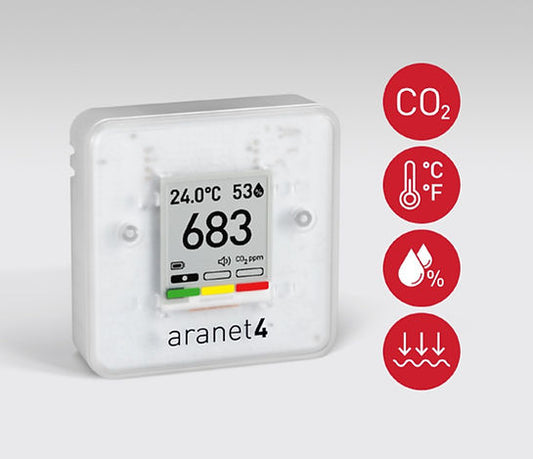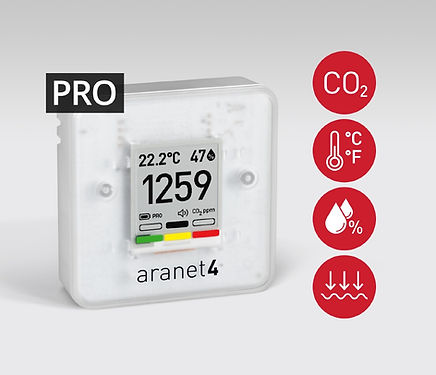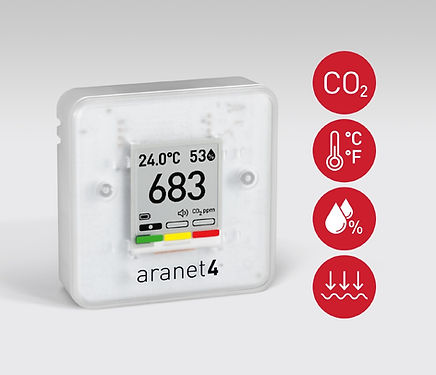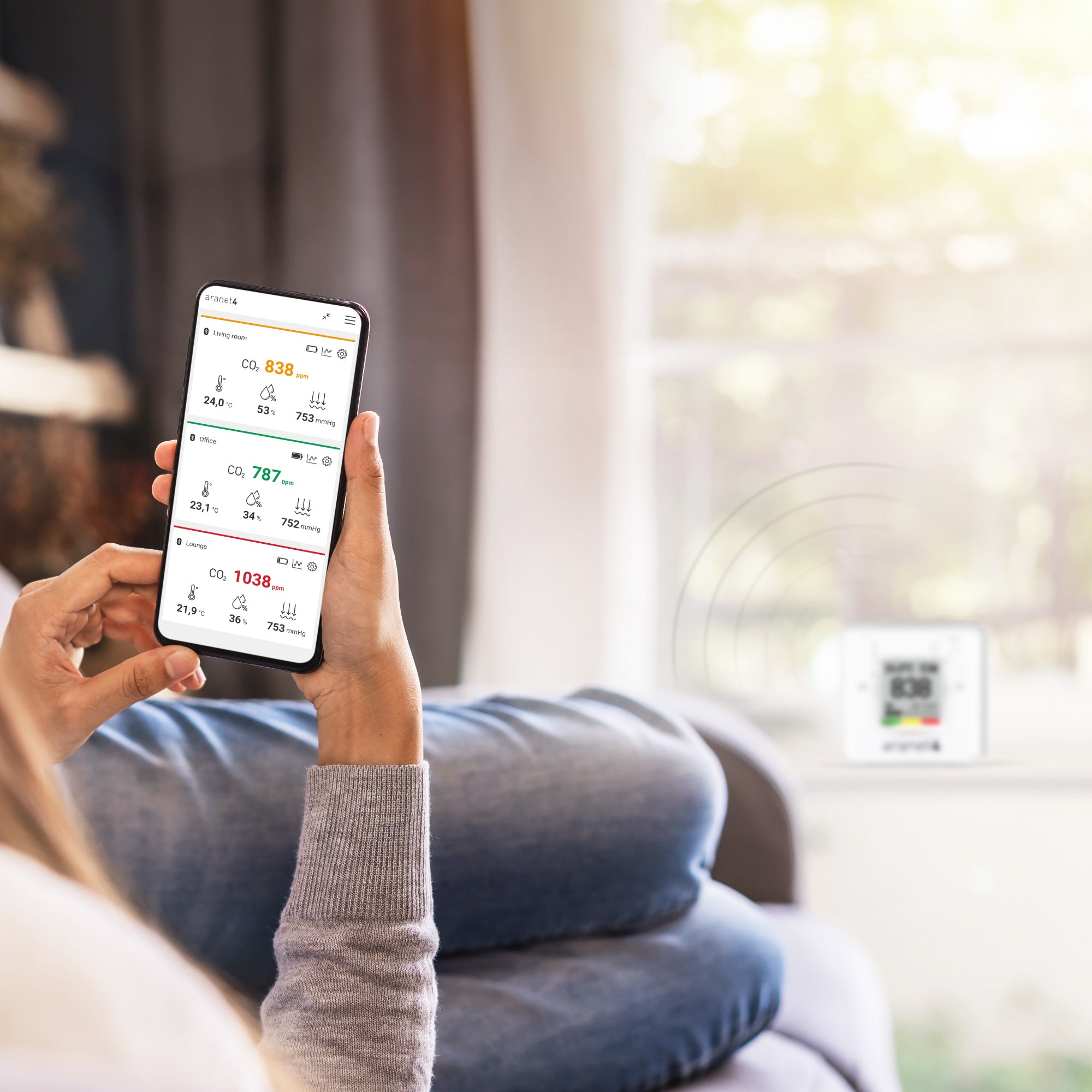
Frequently Asked Questions
Collapsible content
What is IAQ?
Indoor air quality – or IAQ as it is commonly known, refers to the measurement and management of the air within our built environments. Typically, most of us spend up to 90% of our day indoors. And studies have shown the air to be 2-5x worse indoors than outdoors with the global trend to being more aware of both our health and the environment, along with the Covid 19 pandemic, wildfires, sandstorms, IAQ has been thrust into the limelight as something we need and want to measure and manage. After all we measure everything else from the amount of steps we take a day to calories we burn, how much more important is the very air we breathe into our bodies!
Why is IAQ important?
Well, firstly and foremostly it is about our Health. The immediate and long-term impacts of poor air quality are in some cases only just being realized. Immediate effects can include uncomfortableness, headaches, drowsiness, and a less safe environment for transmission of viruses, also leading to inefficiencies in workplace through reduced cognitive ability. Long term effects can include onset and aggravation of many respiratory ailments such as asthma. Suffice to say the effects can no longer be considered minor, and knowing what is in the air we are breathing is important for everyone to feel safe. Environmental efforts are moving globally to reduce emissions and focus on clean air for ourselves and future generations, however right now many of these pollutants can be finding there way indoors into the air we breathe.
What are the things I need to measure?
The below list is not exhaustive but covers of some of main areas we look at when measuring IAQ. These apply to all areas indoors, whether it be home, office, workplace, school, university, healthcare or retail. While some specific workplaces have particular dangers that need to be addresses (such as monoxide).
- Temperature. Let’s start with the basic one, however often underestimated. There are two key reasons we need to focus more on keeping temperature right,1) Comfort. We all know how being too hot or too cold affects our mood and effectiveness, so having a constant comfortable temperature is a basic must. 2) Efficiency. More about this later but consistently holding a building too hot or too cold with manual HVAC is very inefficient and huge cost savings can often be realized for landlords and tenants by measuring and managing this simple measure.
- Humidity. Humidity is a measure of the amount of water vapor in the air. Relative humidity measures the amount of water in the air in relation to the maximum amount of water vapor (moisture). The higher the temperature, the more water vapor the air can hold. Excess humidity can result in aggravation of respiratory illness, mold growth and dampness. Low humidity can cause worsening of itchiness dry skin and eczema.
- CO2 – If you are reading this, chances are you are well aware of the effects of increased CO2 in our indoor spaces. CO2 Carbon dioxide is in the air we breathe out while we are breathing, and our bodies are using the fresh clean oxygen in the air to survive. As the CO2 in a room increases the oxygen effectively decreases so we can use CO2 as a measure of how much fresh air there is in a room. Increased levels of CO2 have been linked with an increase in transmissibility of viruses, however one of the lesser-known effects of high CO2 levels is the reduction of cognitive ability. We all know what it is like to be stuck in a boardroom with not enough fresh air, and that feeling of relief when you get outside, breath in the fresh air and feel immediately better. Well, studies have shown that high CO2 levels can result in up to a 50% reduction in cognitive ability. This is important when we are talking about classrooms and workplaces and has direct impact on productivity and efficiency.
- PM – Particulate Matter. Particulate matter is a kind of air pollutant and is almost invisible. Particulate matter is a complex mixture of solid and/or liquid particles suspended in air. Fine particles that can cause harm and discomfort to our body including respiratory system. Particulate matter is classified into.
o PM10 (less than 10 μm), and
o PM2.5 (less than 2.5 μm) and
o PM1 (less than 1 μm), according to its diameter.
PM2.5 and smaller can be reached into the lower airway and can cause damages into lower respiratory illness. It has also been found that once inhaled, particles can affect heart and lungs and, in some cases, cause serious health effects. https://www.epa.gov/indoor-air-quality-iaq/indoor-particulate-matter
How can I measure IAQ?
Thankfully along with increased awareness and concern around indoor air quality has come the development and production of affordable and smart monitoring devices. 10 years ago, air quality monitoring was the domain of specialists with highly expensive equipment who came in to do spot checks on your environment. Obviously, this is not ideal as environments change and this in no way gives a picture the overall health of a building. Wireless devices now able us to report on IAQ 24/7 and upload data which can be reviewed as graphs over time, allowing a clear picture of how healthy your environment is. And as these devices are measuring constantly, they can also alert you if something reached dangerous levels, such as High PM or high CO2 so you can take immediate corrective action.
So, what are the benefits of measuring my IAQ?
The whole purpose of measuring IAQ is to measure and improve. There are many benefits, but here are 3 main ones.
- More productive. Families/office staff and workers operating in clean fresh air environments are way more creative, efficient, and productive.
- Healthier. Staff have fewer sick days and more inclined to come into the office or classroom. They feel safe and enamored knowing you care about their health and welfare.
- More efficient. Healthy buildings that are carefully monitored and ventilated by intelligent smart sensor solutions can save thousands in HVAC costs every month
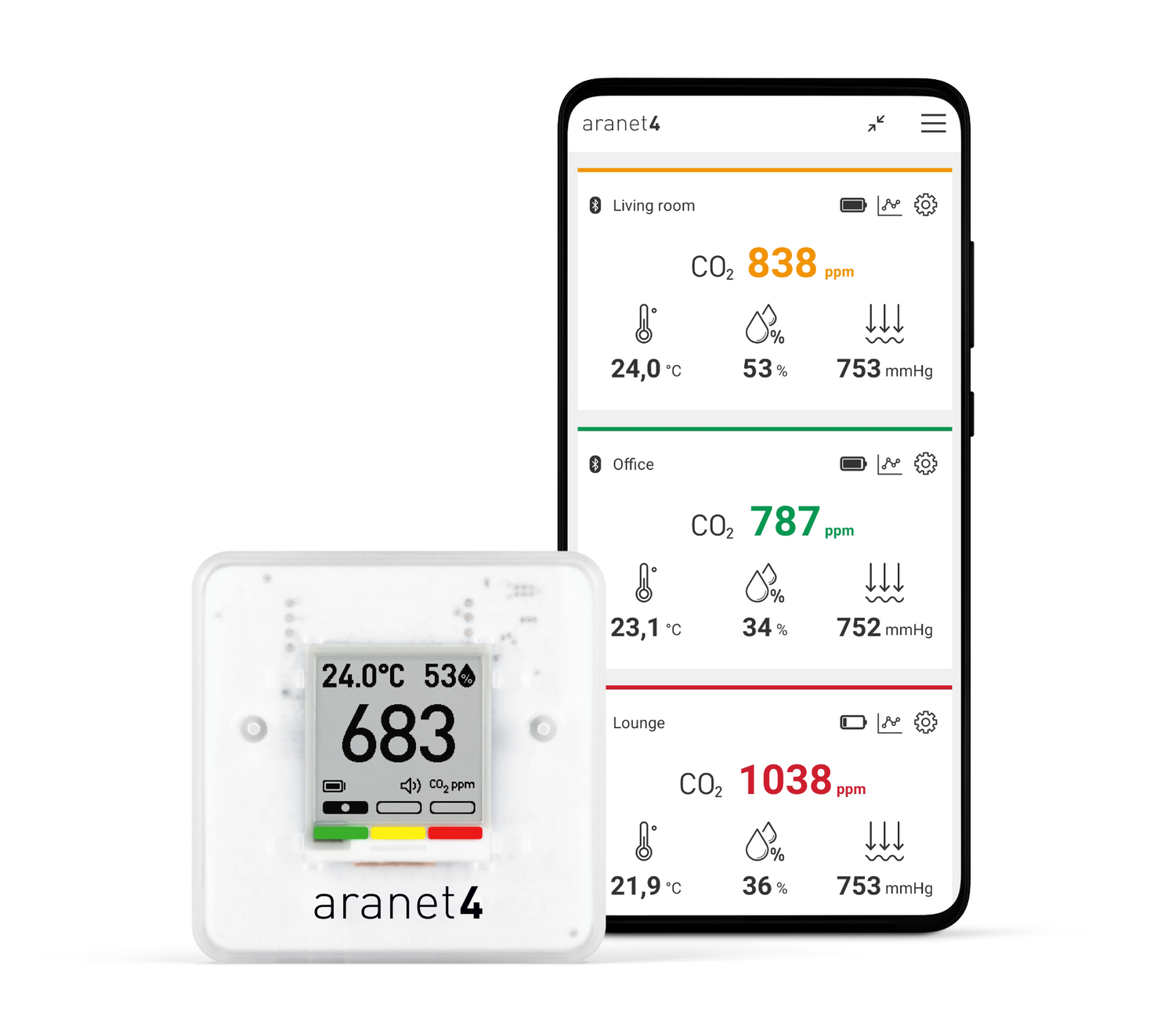
How do I maintain a healthy indoor environment?
Maintaining a healthy indoor air quality environment requires a number of factors, however most of these can simply be addressed by ensuring you have sufficient ventilation of fresh and filtered air into your living environment. Air purifiers and Dehumidifiers and the like can certainly help, however remember these very rarely change the air for fresh air in your home.
Also note that the majority of wall mounted air conditioning units, whilst they have some small amount of filtration, likewise do not remove stale air, or bring fresh air into the home. These are solely for heating and cooling the existing air in your environment.
Outdoor air in New Zealand, is beautifully fresh and clean, sits at around 420ppm CO2. Filtration systems can remove dust and pollens leaving you the clean fresh air to breathe every day, trust us you will feel better and more alive every day!
Breathe Easier.
You may be interested in...
-
Aranet4 HOME CO2 Monitor
Regular price $385.00 NZDRegular priceUnit price / per$465.00 NZDSale price $385.00 NZDSale -
Aranet4 PRO CO2 Monitor
Regular price $466.00 NZDRegular priceUnit price / per$536.00 NZDSale price $466.00 NZDSale -
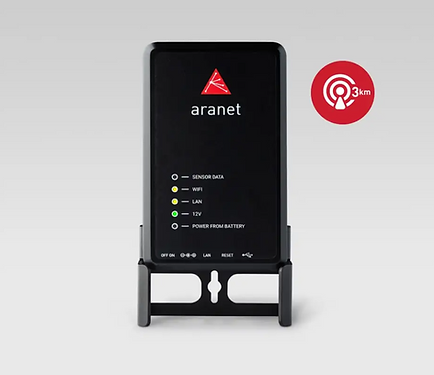 Sale
SaleAranet4 Base Station
Regular price $807.00 NZDRegular priceUnit price / per$910.00 NZDSale price $807.00 NZDSale -
10x Aranet4 HOME CO2 Monitor
Regular price $3,750.00 NZDRegular priceUnit price / per$4,650.00 NZDSale price $3,750.00 NZDSale

